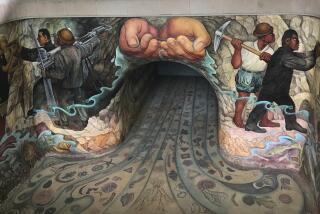Air, Water, Waste, Traffic Conditions Worsen : Mexico City Rat Plague Reflects Bigger Problem
MEXICO CITY — Mexico City is ready to battle a scourge of rats in its most famous park.
The rodent hunt will shut the oldest section of Chapultepec Park to the public for three months, the longest such closure in the park’s 400-year history.
Outings in the popular park have become increasingly unpleasant as strollers and picnickers encounter more and more rats, some weighing up to seven pounds. The rats do not attack humans, but they are aggressive about raiding picnic baskets.
“We will regenerate the park’s flora and fauna and combat its plague of rats,” Ramon Aguirre, Mexico City’s appointed mayor, said this week.
The rat population, not merely in the park but citywide, forms yet another chapter in the endless tale of Mexico City’s unresolved environmental problems. Promises and projects are common, but air, water, waste and traffic conditions continue to deteriorate. The population of Mexico City is estimated at 17 million, making it the world’s largest metropolis.
100 Million Rats
The statistics on the rat population also are astonishing. An estimated 100 million rodents are said to burrow beneath the capital’s streets and among its ramshackle neighborhoods--six rats for every resident.
The rats feed on Mexico City’s 11,000 tons of daily garbage. Trash pickups have long been inadequate, and each day, an estimated 3,000 tons are left on the streets or carted to open fields and dry lake beds on the city’s outskirts.
In Chapultepec Park, weekend visitors leave 60 tons for pickup every Monday. Much of the waste is left strewn on the ground because of a shortage of barrels.
Aguirre said the park will be closed after Sept. 15, Mexico’s independence day, for fumigation and also planting of trees.
Slow to Meet Problem
Some environmental activists think the government has been typically slow in handling the rat problem. “We have pressed them since January,” said Alfonso Cipres, head of the private Mexican Ecologist Movement. “Children are the prime visitors to the park. It is dangerous.”
Chapultepec Park, essentially an urban forest, is older than modern Mexico City. Aztec rulers planted the first ahuehuete trees, a sort of Mexican cypress, on the site, establishing the tradition of a heavily wooded park. Aztec engineers tapped natural springs at Chapultepec to satisfy the thirst of the capital, then called Tenochtitlan.
The Spanish conquerors added a palace on a hill overlooking the woods, and subsequent Mexican governments expanded recreational facilities in Chapultepec, which now include a lake, restaurants, a zoo and several museums.
Over the years, about 200 acres of park were added to the original 50 acres. Only the so-called first section of Chapultepec will be closed.
Lungs of Mexico City
Chapultepec is lovingly called the lungs of Mexico City. Each day, especially on weekends, hundreds of thousands of capital residents, with their children as well as balloons and cotton candy in hand, go there to escape the noise, concrete and, to some degree, the pollution of their city.
The city’s environmental problems are generally worsening. According to recent studies, motor vehicles and factories pour 500 tons of toxic chemicals into the air each hour. A day of breathing in Mexico City is equivalent to smoking 40 cigarettes.
The current rainy season helps cleanse the air, but brings on another problem: acid rain. The rain, combined with dust, smoke and other toxins, is slowly choking the last remaining forests surrounding Mexico City.
In the dry season, there is an added affliction. Winds blow dust from dry lake beds where human waste and trash have accumulated. Airborne bacteria bring on a host of diseases.
Urban Sprawl Continues
All the while, urban sprawl is encroaching on the last wooded areas around the city. Water must be brought from hundreds of feet below the capital at great cost.
Pollution and environmental destruction have been hot topics here for 20 years. Frequently, the government announces “surveillance” of polluting factories and plans to clean up fuel emissions, but the plants still belch smoke and lead-free gasoline is unknown.
The enduring gravity of the problems has bred predictions of municipal death by as early as the year 2000.
Mexico City “is a massive accumulation of errors in the history of humanity,” said Francisco Garcia Palomino, writing in a city magazine.
More to Read
Sign up for Essential California
The most important California stories and recommendations in your inbox every morning.
You may occasionally receive promotional content from the Los Angeles Times.









